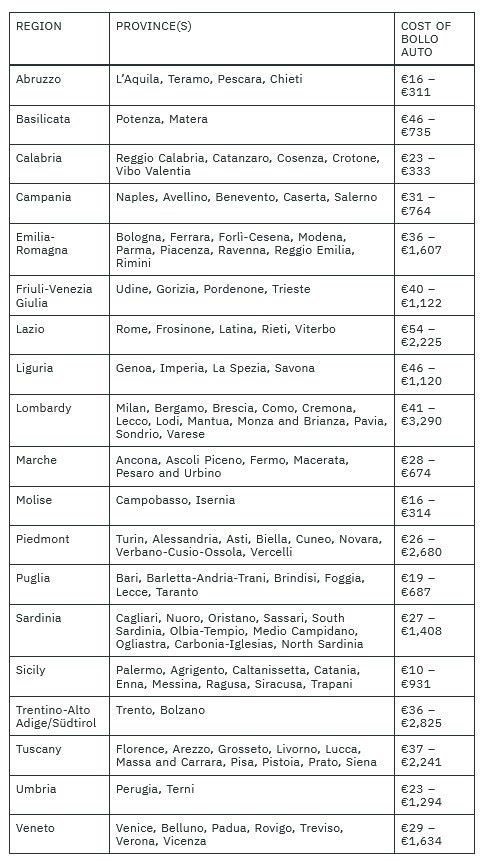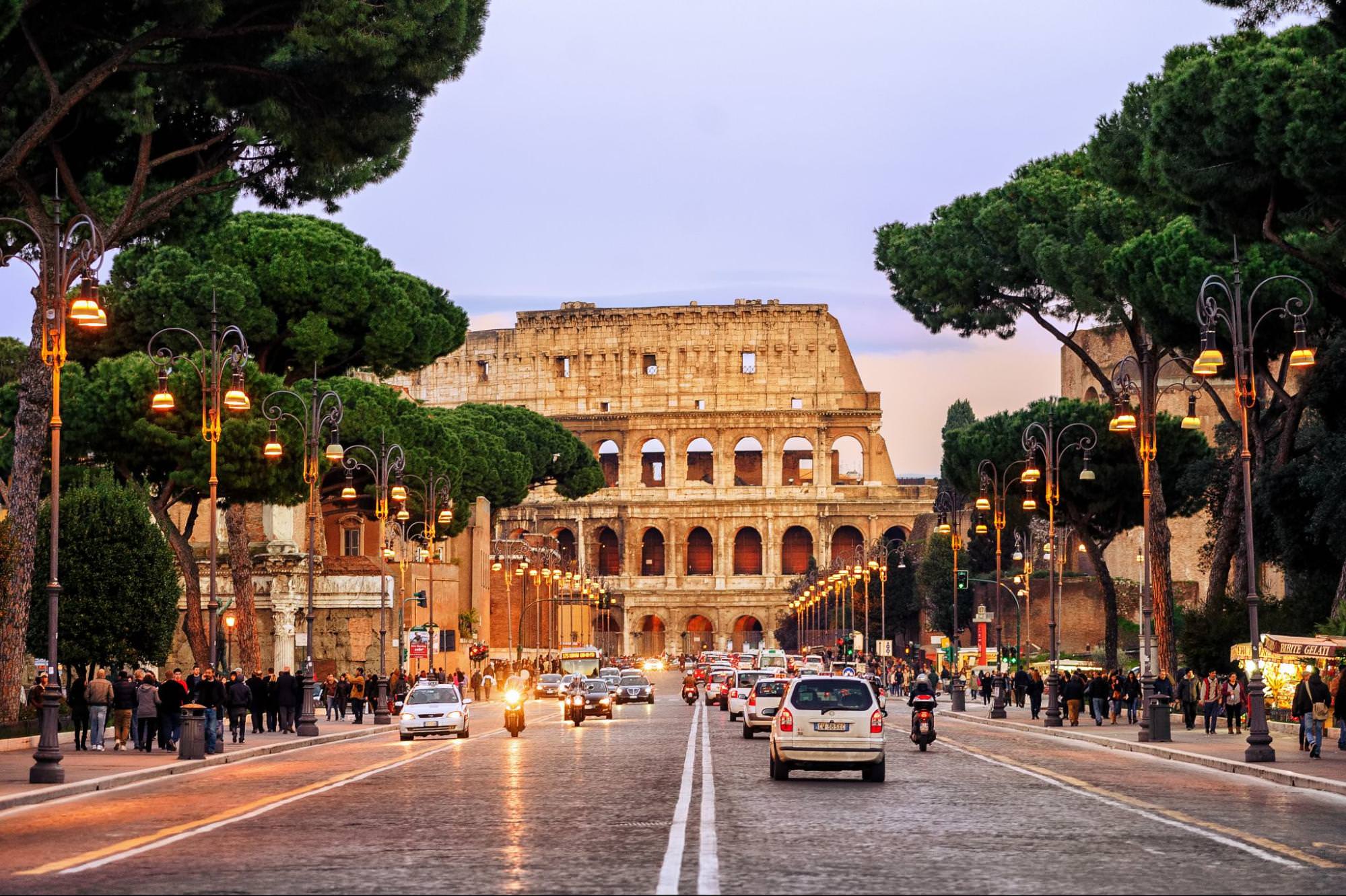- Blog
- Regional Differences in Italy’s Bollo Auto: A Guide for Car Traders
Regional Differences in Italy’s Bollo Auto: A Guide for Car Traders
Discover how Italy's regional bollo auto tax variations affect car trading. Learn about tax exemptions, strategic sourcing, and navigate regional differences effectively.

Bollo auto, or car tax in Italy, is one of the most important things to consider when owning a car or any other motor vehicle there. This mandatory annual tax varies significantly across Italy's twenty regions, with different rates and payment schedules.
In this guide we explore the regional differences, offering practical insights for automotive professionals operating in the Italian market.
How does the bollo auto work in Italy
The bollo auto, Italy's annual vehicle ownership tax, is calculated and paid at the regional level rather than nationally. It used to be called tassa di circolazione or road tax. Italy calculates the tax based on the vehicle's engine power (measured in kilowatts) and environmental classification (Euro-0 to Euro-6 standard).
The first 100 kW of power have one base rate, and then a higher fee is applied for every kW above 100 – so cars with a lot of horsepower mean a much higher tax. This is why smaller cars under 100 kW (about 134 horsepower) are often preferred by Italian buyers.
Bollo auto calculation has three main components:
- Base rate per kW, which varies by region
- Euro emission standard multiplier
- Power multiplier (higher kW = higher rate)
Ownership tax for a car like Fiat Panda will typically be around €135 a year, while for a BMW 330i with a 255 hp engine it will vary from around €450 to over €750, depending on the region.
The Euro emission standard multiplier increases the tax for older, more polluting vehicles. For example:
- Euro 6: Standard rate (1.0x multiplier)
- Euro 5: ~1.1x multiplier
- Euro 4: ~1.2x multiplier
- Euro 3: ~1.3x multiplier
- Euro 0-2: Up to 1.5x multiplier
Note: Exact multipliers vary by region, but generally follow this pattern of increasing for older Euro standards.
Car traders generally don’t pay the bollo auto (vehicle ownership tax) during the time the vehicle is in their inventory for resale. Annual car tax in Italy must be paid only when the vehicle is registered. In other words, as a dealer, you are not paying bollo auto for the vehicles in your inventory unless they have license plates in your name.
If you sell to corporate buyers, it’s important to know that there is also a different tax called fringe benefit tax, which depends on the vehicle’s fuel type – with new incentives for electric and plug-in hybrid vehicles in 2025.
Regional variations of bollo auto tax rates
Italian regions have autonomy in setting their bollo auto rates, leading to notable differences across the country. In addition, some regions offer tax reductions and exemptions for electric, hybrid and gas-powered vehicles, in an effort to encourage eco-friendly vehicles in the country.
On top of that, there is something called superbollo – an additional tax that applies to vehicles with engine power above 185 kW (about 251 horsepower). This extra charge is €20 per kW above 185 kW (fixed nationally), and it leads to higher taxes in regions with many high-performance vehicles, such as in large cities.
These variations can significantly impact the total cost of vehicle ownership and trade operations. It’s difficult to provide a clear overview because the differences among regions are so big – it’s best to use a bollo auto calculator.
In general, more industrialised and economically developed regions (particularly in the north) tend to have higher base rates, while southern regions and islands typically have lower rates.
Currently, Lombardy, Lazio and Piedmont have among the highest base rates, while Molise, Abruzzo and Sicily have the lowest rates.

Source: COC Europe
Tax exemptions and incentives by region
Most regions offer tax exemptions for PHEVs and BEVs for five years after registration. Several regions offer distinct incentives and exemptions for specific vehicle categories.
► Lombardy: electric, hydrogen, natural gas and LPG cars are permanently exempt.
► Piedmont: electric cars are permanently exempt from paying the road tax 5-year exemption for hydrogen vehicles.
► Emilia-Romagna: electric vehicle exemption for first 5 years hybrid vehicle discount of 75%.
Other regions have similar incentives or reduced rates, particularly for hybrids or low-emission vehicles.
Impact of regional taxes on car sourcing
The north-south divide in bollo auto rates reflects Italy's economic landscape. Higher rates in northern regions like Lombardy, Lazio and Piedmont contrast with lower rates in southern regions like Molise, Abruzzo and Sicily.
For traders, these variations affect:
- Local market preferences for fuel types and engine sizes
- Regional variations in EV and hybrid adoption rates due to differing incentives
- Inventory distribution strategies based on regional economic conditions
The tax structure influences buyer behaviour, with consumers in high-tax regions often favouring smaller engines or eco-friendly vehicles to minimise annual costs.
Strategic advice for car traders
Car traders operating in Italy can use a few strategies to stay ahead in the business.
- Monitor regional tax changes and incentive programmes.
- Target distribution to regions offering favourable incentives for specific vehicle types, such as electric or hybrid cars.
- Consider regional tax implications when pricing vehicles for different markets, ensuring competitive and attractive offers.
Head to eCarsTrade for a complete guide on importing a car to Italy, and have a look at our offer of used cars for sale to diversify and adapt your fleet to your target markets. We can be your reliable partner in sourcing quality vehicles, so you can focus on developing your strategy.
Navigating Italy’s car tax landscape
Success in Italy's automotive trade requires understanding regional tax variations – recognising these opportunities gives dealers a competitive edge.
Buying a car in Italy may be a complex process for the end buyers, so stay informed about local regulations and tax incentives to better serve your customers and optimise your inventory strategy across regions. Maintain relationships with regional authorities and leverage digital tools to track tax changes.
This proactive approach will not only help secure healthy profit margins, but also build trust and loyalty among your customers, ensuring long-term success in Italy’s diverse automotive market.
Het importeren van voertuigen uit Europa kan ingewikkeld zijn, maar eCarsTrade is er om het proces te vereenvoudigen. Zo doen we dat:


